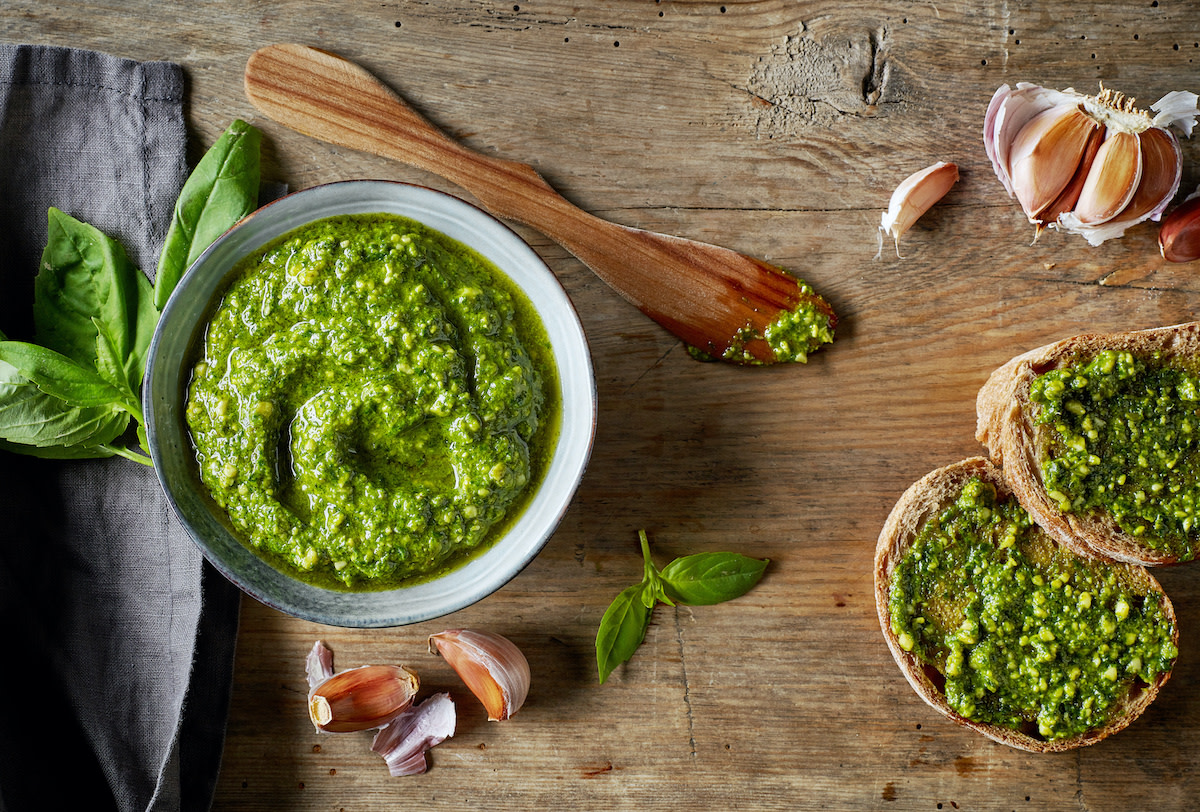Freezing Pesto: 2 Ways to Freeze Fresh Pesto
Written by MasterClass
Last updated: Nov 16, 2021 • 3 min read
Pesto is an easy dish to prepare that requires few ingredients and little prep time. By freezing your fresh pesto, you can enjoy this herbaceous sauce year-round.
Learn From the Best
What Is Pesto?
True pesto is made from fresh basil leaves, garlic, olive oil, pine nuts, and cheese pounded together into a thick, green paste. (The word “pesto” means “pounded” in Italian.) Pesto is generally accepted to be a Ligurian invention, so much so that classic pesto is also called pesto Genovese, after Genoa, the capital of the northwestern coastal region of Italy.
Liguria is famous for its buttery-sweet olive oil, and for its basil, a mildly spicy variety with a clove-like aroma. Pesto was made by crushing these aromatic ingredients together with a mortar and pestle for hundreds of years. Nowadays, it’s far more common to use a blender or food processor to make homemade pesto.
How to Make Pesto
Pesto sauce is made with very simple ingredients: basil, extra-virgin olive oil, garlic cloves, Parmigiano, and pine nuts. But you don’t have to limit yourself to that particular formula. If fresh basil isn’t readily available or you don’t have any pine nuts, have the confidence to change course, using another herb in place of the basil or replacing the pine nuts with fresh bread crumbs. You can substitute kale for basil, Parmesan cheese for Parmigiano, and cashews for pine nuts.
How to Freeze Pesto
Freezing is an excellent way to preserve freshness and vibrancy of a delicious batch of pesto. First, make your pesto according to your favorite basil pesto recipe. It’s always good to use basil that’s as fresh as possible and freeze the pesto right away. By doing all the work in advance, you’ll cut down on the prep time for your future pesto dish.
You can freeze pesto in ice cube trays or in glass jars or other freezer-safe containers. Different methods will yield slightly different results; what works for you will depend on how you plan on storing and using your pesto. Pesto will keep in the freezer for up to six months.
2 Ways to Freeze Pesto
After making your pesto, you can preserve it in the freezer using ice cube trays or airtight containers:
- 1. Use an ice cube tray. You can freeze a batch of pesto in ice cube trays for future consumption. Simply fill the portions of the ice tray, and place the tray into the freezer. Then, once the cubes are frozen (it should take a few hours), remove them from the tray and place them in a freezer bag. Label with the date, and store in the freezer. To ensure the green color of your pesto, drizzle a thin layer of olive oil on top of the cubes. Then, place a sheet of plastic wrap over the tray. Once the pesto cubes have frozen, remove the plastic wrap before transferring the cubes to a plastic bag. This extra layer of olive oil can help keep the frozen pesto from darkening due to oxidation.
- 2. Store in glass jars. Small glass jars, such as half-pint or four-ounce jars, are suitable airtight containers for preserving pesto in the freezer. After preparing your pesto, simply pour it into the jars. Screw the lids on tight, then transfer to the freezer.
How to Use Frozen Pesto
You can use frozen pesto in place of fresh pesto for appetizers, entrees, and condiments. After taking the pesto out of the freezer, defrost the pesto in the microwave or in a pot on the stove over a low heat. Then, you can enjoy a delicious dish of pesto pasta. You can defrost frozen pesto cubes and drizzle the pesto on a caprese salad, brush it on warm bread, or serve as a dip for crackers and veggies.
Want to Learn More About Cooking?
Become a better chef with the MasterClass Annual Membership. Gain access to exclusive video lessons taught by the world’s best, including Massimo Bottura, Gabriela Cámara, Niki Nakayama, Chef Thomas Keller, Yotam Ottolenghi, Dominique Ansel, Gordon Ramsay, Alice Waters, and more.
